Human-wildlife conflict is a shockingly common problem, often with enormous consequences for both individual animals and entire populations.
When human-wildlife conflict comes to mind, you may immediately think of wildlife crime instead - which isn't wrong, since many regions with wildlife crime problems like poaching are also areas where people may frequently deal with human-wildlife conflict, causing the two issues to go hand-in-hand. But human-wildlife conflict is a much broader issue encompassing many ways that human presence and interference can cause problems for us and animals alike. Human-wildlife conflict includes:
- Elephants trampling a farmer's crops, resulting in retaliation
- New real estate developments infringing on ecosystems where predator species live, leading to predators having less territory and less food, which in turn leads to predators attacking domestic animals and livestock
- Freeways dividing the territory of animals like mountain lions, leading to wildlife venturing into neighborhoods or being killed by cars
- Lead bullets used in hunting causing scavengers like condors to die of lead poisoning
These are just a few examples of how humans can negatively impact wildlife, and it's clear to see how many of these scenarios could escalate. Human-wildlife conflict solutions don't just include ways in which we can prevent these issues (for example, through tracking predators, monitoring populations' territories, or building barriers and wildlife crossings monitored by sensors), but also the ways in which we can help people connect with wildlife and care about learning to live alongside them.
If you're interested in solutions that can prevent human-wildlife conflict, join this group and get to know the people who are working to protect and save species around the world!
Header image: Casey Allen on Unsplash
I'm a software developer. I have open source projects in practical object detection and alerting that is well suited for poacher detection and a Raspberry Pi based sound localizing ARU project


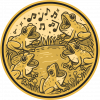
- 0 Resources
- 213 Discussions
- 5 Groups
WILDLABS
This account is managed by the WILDLABS Team. Tag us or DM whenever you need help from our community team.



- 20 Resources
- 23 Discussions
- 11 Groups
Freaklabs
I'm an engineer and product designer working on wildlife conservation technology.



- 0 Resources
- 280 Discussions
- 14 Groups
WILDLABS & Wildlife Conservation Society (WCS)
I'm the Bioacoustics Research Analyst at WILDLABS. I'm a marine biologist with particular interest in the acoustics behavior of cetaceans. I'm also a backend web developer, hoping to use technology to improve wildlife conservation efforts.





- 8 Resources
- 14 Discussions
- 32 Groups
Sustainability Manager for CERES Tag LTD. An animal health company; animal monitoring, conservation, & anti-poaching/ rural crime. Wildlife, livestock, equine & companion. #CeresTrace #CeresWild #CeresRanch





- 2 Resources
- 20 Discussions
- 24 Groups
- @TaliaSpeaker
- | She/her
WILDLABS & World Wide Fund for Nature/ World Wildlife Fund (WWF)
I'm the WILDLABS Research Specialist at WWF-US

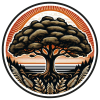

- 14 Resources
- 59 Discussions
- 24 Groups
- @alexrood
- | she/her
WILDLABS & World Wide Fund for Nature/ World Wildlife Fund (WWF)
I'm the WILDLABS Communications and Community Management Associate Specialist at WWF-US

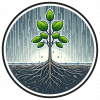



- 37 Resources
- 42 Discussions
- 8 Groups
- @bluevalhalla
- | he/him
BearID Project & Arm
Developing AI and IoT for wildlife



- 0 Resources
- 32 Discussions
- 6 Groups
- @hjayanto
- | He/Him
KONKLUSI (Kolaborasi Inklusi Konservasi - Yayasan)
Your friendly Indo-Crocky-Croc



- 0 Resources
- 36 Discussions
- 17 Groups
- @Agripina
- | Miss
Frankfurt Zoological Society
As a wildlife conservationist, I am deeply committed to nature conservation, community empowerment, and wildlife research in Tanzania. I've actively engaged in community-based projects, passionately advocating for integrating local communities into conservation.
- 3 Resources
- 22 Discussions
- 6 Groups
Ms. Sarah Mshanga is a research assistant-trainee at the Women in Conservation Organization since August 2023. She holds BSc. in Wildlife Management from Sokoine University of Agriculture. She also interned at Lion Landscapes and GMERC Project.
- 8 Resources
- 36 Discussions
- 10 Groups
- @StephODonnell
- | She / Her
WILDLABS & Fauna & Flora
I'm the Executive Manager at WILDLABS.



- 153 Resources
- 669 Discussions
- 30 Groups
Join us in celebrating this year’s Community Choice Award winners!
15 August 2024
ADAP is looking for a post-graduate Tanzanain that has just finished her/his studies and would like to gain experience by conducting a study on human-wildlife conflicts
8 August 2024
WILDLABS is partnering with FLIR to give away a FLIR ONE Edge Pro to 5 community members.
26 June 2024
Traditional log bomas, used to protect livestock, are being replaced by more resilient wire fences. Wire fences offer several advantages: they are more durable, and provide better security against predators. This...
15 June 2024
Wildlife Drones was deployed by Zoos Victoria in a trial project tracking captive-bred Eastern Barred Bandicoots that were tagged and released into the wild
14 June 2024
WildLabs will soon launch a 'Funding and Finance' group. What would be your wish list for such a group? Would you be interested in co-managing or otherwise helping out?
5 June 2024
Now accepting applications for two $15,000 grants to help protect wildlife through cutting-edge, technology-driven efforts
3 June 2024
The IEF's Elephant Conservation and Research Funding Support Program has opened a call for applications. Average grant size is $15K, whereas the IEF funds 20 to 25 projects per year.
22 May 2024
Do you have photos and videos of your conservation tech work? We want to include them in a conservation technology showcase video
17 May 2024
Article
Read in detail about how to use The Inventory, our new living directory of conservation technology tools, organisations, and R&D projects.
1 May 2024
Article
The Inventory is your one-stop shop for conservation technology tools, organisations, and R&D projects. Start contributing to it now!
1 May 2024
Technology to End the Sixth Mass Extinction. Salary: $132 - $160k; Location: Seattle WA; 7+ years of experience in hardware product development and manufacturing; View post for full job description
1 May 2024
September 2024
event
October 2024
July 2024
event
24 Products
3 R&D Projects
29 Organisations
Recently updated products
Recently updated R&D Projects
Recently updated organisations
| Description | Activity | Replies | Groups | Updated |
|---|---|---|---|---|
| Ah, and perhaps have a look at conservationdrone.org 😉 |
+7
|
Drones, Human-Wildlife Conflict | 1 week ago | |
| Thank you so much! Now everything is in the hands of amazing organizations and companies! But the first results of the Disaster Management cohort are bringing a very optimistic... |
|
AI for Conservation, Climate Change, Early Career, East Africa Community, eDNA & Genomics, Emerging Tech, Ending Wildlife Trafficking Online, Human-Wildlife Conflict, Open Source Solutions | 2 weeks 1 day ago | |
| Great!!! |
+32
|
AI for Conservation, Drones, Emerging Tech, Human-Wildlife Conflict, Wildlife Crime | 2 weeks 2 days ago | |
| @cmwainaina please take a look |
|
Biologging, AI for Conservation, Camera Traps, Connectivity, Data management and processing tools, East Africa Community, Emerging Tech, Ethics of Conservation Tech, Human-Wildlife Conflict, Marine Conservation, Protected Area Management Tools, Remote Sensing & GIS, Sensors, Software and Mobile Apps | 3 weeks 4 days ago | |
| Hi @nyangetamagesa , i'm so grateful for our input. |
|
Human-Wildlife Conflict, Data management and processing tools, East Africa Community, Women in Conservation Tech Programme (WiCT) | 4 weeks ago | |
| Thank you so much Adventina for sharing this wonderfully knowledge with me. |
|
Human-Wildlife Conflict | 1 month ago | |
| Hi everyone, it’s time I introduce our project titled “Innovative Sensor Technologies for Sustainable Coexistence: Advancing... |
|
Biologging, Human-Wildlife Conflict | 1 month ago | |
| I will start by asking: What will the future of conservation be if all the incentives do not hit the jackpot????In recent years, we have... |
|
Conservation Tech Training and Education, East Africa Community, Human-Wildlife Conflict | 1 month ago | |
| In that case, you might want to keep an eye on the project from @Lars_Holst_Hansen |
|
Camera Traps, AI for Conservation, Conservation Tech Training and Education, Early Career, Human-Wildlife Conflict, Protected Area Management Tools | 2 months ago | |
| Hey @FleuryGS :)Bright Frog Game Studios is producing some really cool environmental education video games that more people should know about! I've gone ahead and added it as an... |
|
Human-Wildlife Conflict | 3 months ago | |
| Thank you Robyn. Sure I will send more information to your email |
|
Citizen Science, Acoustics, Conservation Tech Training and Education, Human-Wildlife Conflict | 3 months 3 weeks ago | |
| Totally agree.Inititally sceptical until I saw Helena and Graeme were involved.MJ |
|
Acoustics, Citizen Science, Community Base, Human-Wildlife Conflict | 3 months 3 weeks ago |
Community Choice Award Winners: #Tech4Wildlife Photo Challenge
15 August 2024 2:41am
Seeking Advice on Thermal Drones for Night-Time Elephant Observation
25 December 2023 9:53am
9 August 2024 12:55pm
Hi Nilaksha,
maybe it helps 😉 My free manual 'Drones in Biomonitoring' - https://doi.org/10.5281/zenodo.8077113 can help to get (more) knowledge how to proceed easily and successfully 😉
It covers topics from buy to fly and data processing.
📖 The manual was developed to help authorities, landscape conservation / maintenance or nature conservation associations etc. in nature conservation to manage their growing monitoring tasks more effectively and cost-efficiently.
🛸 The use of drones can contribute in many ways to increasing the effectiveness of monitoring, reducing costs and minimizing disturbance - https://www.researchgate.net/profile/Steffen-Doering.
Best regards!
Steffen
9 August 2024 12:58pm
Ah, and perhaps have a look at conservationdrone.org 😉
Human-wildlife conflicts junior consultancy
8 August 2024 7:54am
AI accelerator for nonprofits working in the Climate area
31 July 2024 3:01pm
31 July 2024 6:24pm
Great acomplishment!!!
1 August 2024 1:39pm
Thank you so much! Now everything is in the hands of amazing organizations and companies! But the first results of the Disaster Management cohort are bringing a very optimistic vision! :) I hope for the same in the Climate cohort!
Mass Detection of Wildlife Snares Using Airborne Synthetic Radar
7 January 2024 6:50am
14 July 2024 9:54am
Hi Heinrich, you are absolutely right about the need for long-endurance drone for such a mission on 250km^2.
Taking a full frame 35mm camera with a 35mm (wide angle) lens you would have a field of view of 123 metres x 83 metres (looking straight down, you want to be looking at an angle and doing this in high contrast lighting, preferably with the sun behind the camera).
If the area was a square 15.8km x15.8km you would need to do 16 km / 123m = 128 transects to cover the area which is 16km x 128 = 2,057km which if flying at 135 km (safe speed for game counting in a high wing Cessna 182) is 15.23 hours of flying.
Endurance and speed in commercially available drones - is what is stopping drones from realising their conservation potential.
Attached is initial (conservative) design performance details.
Contact me on +27 72 472 5318 and we can discuss this further.
31 July 2024 4:30pm
there is this one too:
31 July 2024 6:22pm
Great!!!
Move BON Development: Follow up discussion
19 June 2024 12:02pm
11 July 2024 10:14pm
You can catch up on the recording at that same link to the June Variety Hour! Lacey's fabulous talk starts around the 9:40 mark :)
12 July 2024 5:38am
Hi Talia!
I feel like the topic is so broad that it might help to put some constraints around things, see what works, and then broaden those out. I have a lot of ideas regarding the data monitoring and collection side based on the other sensor and observation networks we've set up in the past.
There may also be some potential scope to incorporate things like data collection and integrated monitoring to the Build Your Own Datalogger series where the system is updated to feed data into the observation network.
It'd probably take a bit of discussion and coordination. Let me know if interested. I'm fine to jump on a call or discuss via email too.
22 July 2024 9:24pm
@cmwainaina please take a look
Looking for literature materials/any useful data on HHC(Human-Hippopotamus Conflict) mitigation and coexistence.
12 June 2024 7:24pm
7 July 2024 10:07am
Hi loveness,
Your doing great here are some research that may be helpful on what your looking for
search for article of Human-Hippopotamus Conflict: Impacts and Mitigation Strategies published in the Journal of Wildlife Management.
19 July 2024 1:56pm
Hey @Agripinacletus , thank you so much for your constructive input.
19 July 2024 1:57pm
Hi @nyangetamagesa , i'm so grateful for our input.
Looking on how to mitigate human-elephant conflict
9 July 2024 1:42pm
12 July 2024 1:25pm
To add to what Agriphina said, I think community engagement is the top-tier key, and engaging them effectively means first understanding the community you are working with i.e. their problems, needs, livelihoods, and their foreseen solutions. You can also engage the community through meetings and workshops. Mfano: Unaweza kuwashirikisha kwenye utengenezaji wa zile local tools kama chill blocks, just to make them have the feeling of benefit and improve that myth of fighting "alone".
You can also allow them to have their representatives, (leaders who will speak on their behalf), also, do your best to give back feedback and information to the community members, (do not only take information from them).
Side note: Working with communities may be different, one strategy may work for one community and the same strategy may not work for yours, it's important to understand your community and flow with what suits it while you engage them in what you think is helpful to them.
12 July 2024 1:26pm
To add to what Agriphina said, I think community engagement is the top-tier key, and engaging them effectively means first understanding the community you are working with i.e. their problems, needs, livelihoods, and their foreseen solutions. You can also engage the community through meetings and workshops. Mfano: Unaweza kuwashirikisha kwenye utengenezaji wa zile local tools kama chill blocks, just to make them have the feeling of benefit and improve that myth of fighting "alone".
You can also allow them to have their representatives, (leaders who will speak on their behalf), also, do your best to give back feedback and information to the community members, (do not only take information from them).
Side note: Working with communities may be different, one strategy may work for one community and the same strategy may not work for yours, it's important to understand your community and flow with what suits it while you engage them in what you think is helpful to them.
13 July 2024 1:18pm
Thank you so much Adventina for sharing this wonderfully knowledge with me.
19th Australasian Vertebrate Pest Conference 2024
12 July 2024 12:42am
WILDLABS AWARDS 2024 - Innovative Sensor Technologies for Sustainable Coexistence: Advancing Crocodilian Conservation and Ecosystem Monitoring in Costa Rica
11 July 2024 11:30pm
what will be the future of conservation?
10 July 2024 9:33am
Enter to win a free thermal camera!
26 June 2024 5:38pm
Securing the herd: traditional log Bomas Make way for Resilient Wire Fences
15 June 2024 8:35pm
17 June 2024 2:06pm
17 June 2024 2:09pm
17 June 2024 8:01pm
Conservation Technology for Human-Wildlife Conflict in Non-Protected Areas: Advice on Generating Evidence
22 January 2024 11:36pm
4 February 2024 8:16am
Hi Amit,
The most important thing is that the livestock owners contact you as soon as possible after finding the carcass. We commonly do two things if they contact us on the same day or just after the livestock was killed:
- Use CyberTracker (or similar software) on an Android smart phone to record all tracks, bite marks, feeding pattern and any other relevant signs of the reason for the loss with pictures and GPS coordinates. [BTW, Compensation is a big issue -- What do you do if the livestock was stolen? What do you do if a domestic animal killed the livestock? What if it died from disease or natural causes and was scavenged upon by carnivores afterwards?]
- In the case of most cats, they would hide the prey (or just mark it by covering it with grass or branches and urinating in the area). In this case you can put up a camera trap on the carcass to capture the animal when it returns to its kill (Reconyx is good if you can afford it - we use mostly Cuddeback with white flash). This will normally only work if the carcass is fresh (so other predators would not be able to smell it and not know where it is yet), so the camera only has to be up for 3-5 days max.
This is not really high-tech, but can be very useful to not only establish which predator was responsible (or if a predator was responsible), but also to record all the evidence for that.
13 June 2024 8:58pm
Hey Amit,
This is a great question; from our work, we've seen people do a couple of things. We've even seen people using Ring doorbell footage in urban areas as evidence.
The best thing we've seen is matching the community needs with existing infrastructure:
- Are there existing cameras you can leverage, like the doorbell cameras?
- Can public participation monitoring service this, i.e. public submitted photos and videos?
It also totally depends on the wildlife species you're working with, the interaction, damages, etc. If you've found any good solutions, let me know. I'd love to share that information with our clients here who have constant bear problems.
14 June 2024 9:09am
In that case, you might want to keep an eye on the project from @Lars_Holst_Hansen
Case Study: Drone-based radio-tracking of Eastern Bandicoots
14 June 2024 3:53am
New WILDLABS Funding & Finance group
5 June 2024 3:24pm
5 June 2024 4:14pm
6 June 2024 1:38am
6 June 2024 4:16am
Apply! 2024 Conservation Tech Award
3 June 2024 3:51pm
International Elephant Foundation call for $15K projects
22 May 2024 5:09pm
Share Your Work in a Conservation Technology Video
17 May 2024 9:06pm
Operation Ferdinand - a Predator and Livestock Conflict Prevention Video Game!
23 June 2017 7:12pm
15 May 2024 10:36am
Hey @FleuryGS :)
Bright Frog Game Studios is producing some really cool environmental education video games that more people should know about! I've gone ahead and added it as an organisation entry on the Inventory #Bright Frog Game Studios where you can edit and add more information, sharing more about the insightful games you've developed like Operation Ferdinand.
The Inventory User Guide
1 May 2024 12:46pm
Introducing The Inventory!
1 May 2024 12:46pm
22 July 2024 10:55am
23 July 2024 2:05pm
23 July 2024 2:53pm
Hiring Chief Engineer at Conservation X Labs
1 May 2024 12:19pm
Delving into #tech4wildlife Innovation across East Africa with Sandra Maryanne & Catherine Njore
 Esther Githinji
Esther Githinji
30 April 2024 11:37am
WILDLABS AWARDS 2024 - Fostering bat conservation and citizen science in Zimbabwe: Establishing bat groups and training individuals to use bat detectors
4 April 2024 12:12pm
8 April 2024 9:29am
Thank you Carly!
We have over 60 bats recorded in Zimbabwe
19 April 2024 2:16pm
Abigail. I would love to know more and potentially support the initiative. Please send me more info on [email protected]
24 April 2024 2:27pm
Thank you Robyn. Sure I will send more information to your email
Thoughts on RooBadge?
2 April 2024 2:55pm
5 April 2024 12:31pm
Sound deterrents to prevent collisions with Kangaroos in Australia have been sold for many years. None have been shown to work. Whether the Volkswagen device will be any better waits to be seen. Collision data will have to be collected for a while to see if the VW device has any effect on collision rate.
8 April 2024 12:49am
That is an interesting concept, and it would be great if something out there worked. In the meantime, I will try not to drive at dusk 🦘
At one point, I knew the "sonic" animal guards were the most stolen components of cars. You head in, get groceries, and come out, and they are gone. They weren't on the car long enough for me to confirm that would work
20 April 2024 2:40am
Totally agree.
Inititally sceptical until I saw Helena and Graeme were involved.
MJ
Webinar: Bats and Wind Energy
18 April 2024 6:11pm
Early Warning Systems for Human-Wildlife Conflict, Zoonotic Spillover, and Other Conservation Challenges
17 April 2024 5:43pm





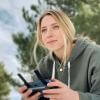


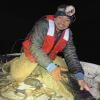


























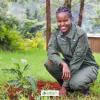







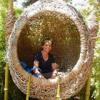










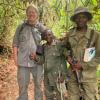














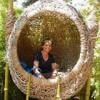





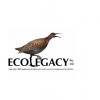

16 February 2024 8:34am
@PaulAllin Thanks for your valuable insights. Zenmuse H20N seems to be very powerful and useful in this case. However, I'm looking for a more affordable option for a self-funded research.